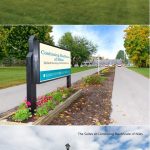Cambridge Realty Capital Chairman Jeffrey Davis predicts that the demand for HUD loans by skilled nursing facility owners will grow in the coming years. “The financial landscape is changing for skilled nursing facilities.” Faced with a skilled labor shortage, rising interest rates and the cost of providing health services growing faster than inflation, owners/operators are looking for a measure of stability and predictability when it comes to budgeting. “HUD financing offers this, and more,” Davis states.
“In spite of market challenges, HUD has stayed true to its mission to provide capital to skilled nursing facility borrowers,” says Davis. “Not only will HUD fill the funding void for skilled nursing facilities, but HUD loans also offer some enticing features.”
When people think of HUD loans, they immediately think of competitive interest rates and lower credit score thresholds. While this is certainly true, this merely scratches the surface when it comes to the benefits of HUD funding.
HUD funding was designed from its inception to be highly accessible because it fulfills an important mission: to encourage the building and provision of affordable housing and care for Americans. In its earliest form, it was created to honor the service of Americans who contributed to the efforts of World War I, as well as to prevent a housing crisis for soldiers returning from service overseas after the war.
While this funding has morphed over the years to keep up with the changing times (including becoming administered by the agency now known as “HUD”), much about it has remained the same. “HUD has strived to keep its loan in a similar look and feel for decades,” Davis relates.
What also hasn’t changed is its mission: to provide access to housing for all Americans, regardless of their ability to pay. Today there are a variety of programs under the HUD umbrella, addressing everything from homelessness to the provision of healthcare.
For this reason, HUD’s benefits reach beyond competitive interest rates. They include:
- 80% loan-to-value
- 30-35 year term and amortization
- Non-recourse
- Fixed, predictable rates; contrary to commercial banks, conduit lenders, private lenders, insurance companies, etc.; there is no rate volatility once locked in
- No balloon or call
- Several forms of negotiable prepayment penalties
- HUD, combined with Ginnie Mae, provides guaranteed backing, allowing the borrower to obtain the most competitive, long-term, fixed-rate pricing
Perhaps its most appealing feature, given the current challenges facing skilled nursing facility operators, is its predictable nature. With its defined amortization term and unchanging interest rate, monthly mortgage payments are one of the few budget items that skilled nursing facility operators can count on not to fluctuate. “It makes planning for the future a little bit easier for these operators,” Davis asserts.
Borrower concerns over red tape and processing wait times over HUD loans have some historical grounding. But, says Davis, HUD has worked hard to address these problems, solving many of them by introducing the HUD LEAN process in recent years.
Still, delays can arise, but often they are due to provider inexperience, so Davis urges borrowers to choose a provider, such as Cambridge Realty Capital, with extensive experience and a high success rate in obtaining HUD funding for its clients.




